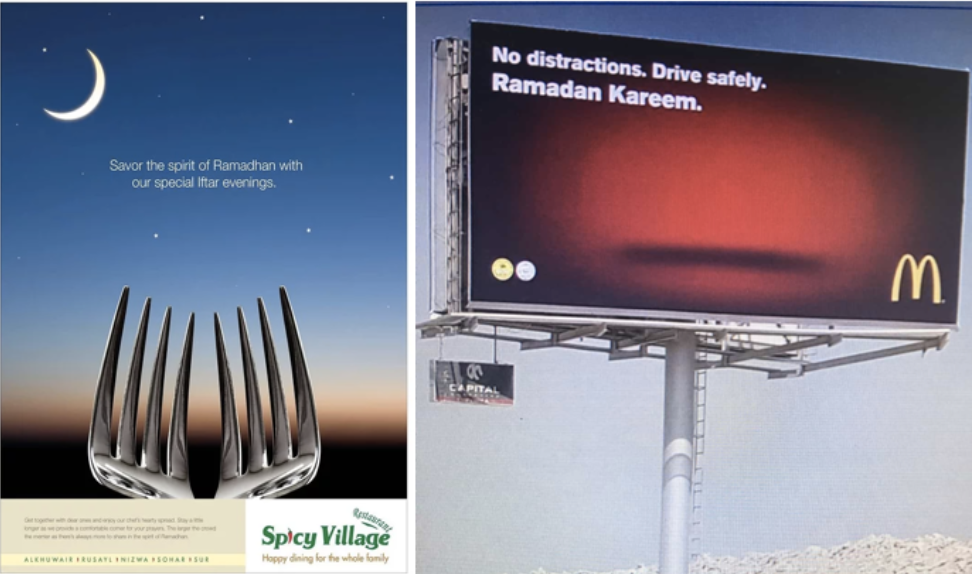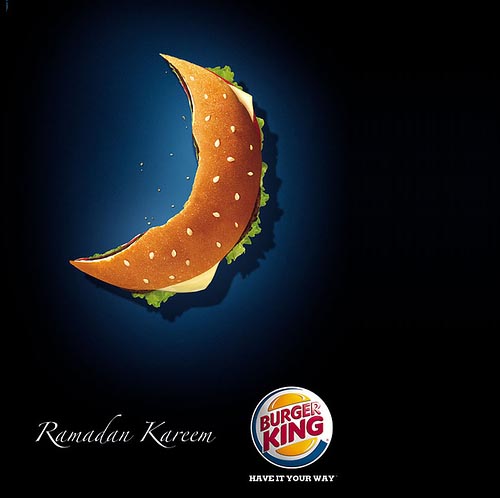Around the world, over 1.8 billion people began celebrating the holy month of Ramadan on April 23rd, including over 1 million Canadian Muslims. Ramadan is the ninth month in the Islamic lunar calendar and is a special month of fasting and increased prayer and worship. Since the lunar calendar differs from the Gregorian calendar by 11-12 days, Ramadan occurs during a different season from year to year.
Ramadan is a particularly important holiday for those of the Muslim faith and is recognized as the fourth of the five pillars of Islam. This month-long celebration, which provides an opportunity for those who follow it to focus on their faith, includes several cultural activities and traditions.
Fasting
One of the key elements of Ramadan is the act of fasting. Fasting occurs from dawn to sunset, and lasts anywhere between 12 to 17 hours. Both physical and spiritual aspects of life are abstained from during this time including, food, water, sexual activity and blame-worthy thoughts like foul language and hurtful behaviour.

Not everyone fasts during this time. There are a handful of exceptions to the rules, including children prior to puberty, adults who are ill, adults who are traveling long distances, as well as women who are pregnant or menstruating.
There are also a number of benefits and reasons for fasting during daylight hours. First, according to Muslim beliefs, fasting during Ramadan increases an individual’s “ihsan”, or their sincerity and righteousness. In addition, fasting has been proven to have a handful of health benefits attributing to lower blood sugar, cholesterol and blood pressure.
However, the most potentially widely recognized reason for fasting is to improve strength, endurance and self-discipline through physical abstentions. It is also thought to simulate the experience of those less fortunate than yourself, improving an individual’s charity, kindness and generosity.
More Ramadan Traditions
Many other activities are associated with the month-long celebration of Ramadan, including but not limited to;
-
- Suhoor – the meal consumed before dawn prior to fasting
- Iftar – breaking of the fast at sunset, which usually involves a community meal like a pot-luck
- Reading – the Holy Qu’ran
- Qiyam – optional late-night prayers
- Visits – social gatherings, sharing food and gifts with neighbours, friends and the poor
Eid-Al-Fitr: The End of Ramadan
Traditionally, the end of Ramadan month is marked by a large celebration known as Eid-Al-Fitr, or Eid. For Eid, families gather together at mosques for morning prayers, and large festivals and feasts are held in cities and communities. At this time, Zakat-Al-Fitr is collected, which is a prescribed amount of money obligatory for every Muslim, calculated to feed one poor person in his region for one day. In other words, a charitable donation for the local impoverished. Gift-giving is a common practice that also occurs at the end of Ramadan month, especially to young children.
Ramadan in 2020
As with many cultural traditions, the novel virus COVID-19 has caused a number of disruptions causing those who celebrate to adapt. As you may suspect, many of the activities stated above, such as visiting, is not possible this year with physical distancing practices in place. In addition, many places of worship are closed and families celebrating Ramadan are asked to connect with distant relatives virtually.
Marketing and Ramadan
The behavior of consumers – both online and offline took a dramatic turn almost a month before the start of Ramadan. This shift in behavior is shaped by factors such as amended office hours, dining patterns, community engagement, sleeping patterns and religious devotion.
Both purchasing behaviour and media consumption behaviours are affected by the changes Ramadan brings to the day-to-day life of those who are celebrating.
YouTube
According to YouTube’s statistics, consumers spend increases by 53% overall during Ramadan. The increase is mostly on household goods, at about 90%, followed by food, travel and festive gifts.
In addition, during Ramadan, potential customers watch more longer format videos, reflected in a 60% year-on-year growth. Overall, audiences spend longer periods of time on mobile with an increase in organic viewership of advertising content.
Facebook and Instagram
On the other hand, over 70% of people in the UAE (United Arab Emirates) say they rely on Facebook for gift ideas. Online shopping occurs regularly during the day, but 3 AM is the optimum time for Facebook usage during Ramadan.
Since last year, there has been a 5% increase in Facebook usage among all audiences in the Middle East. This gives brands an extra 57.6 million hours to capture the attention of their target market.
In addition, people are online during suhoor and iftar timings for sharing their dining experiences, wherever they are. A practice that is only going to increase after this year. Since people consume more video content in Ramadan, your brand can benefit by running video ads to meet the rising demand for it; The spirit of gifting increases dramatically towards the end of Ramadan (the 4th week). That’s why Facebook and Instagram are the perfect platforms to run ads inspiring people to start gifting; changing the angle of your messaging to focus on gifting during this time.
Examples of Ramadan Advertising
In these three display advertising examples, marketers have focused on the practice and importance of fasting.


In another example, this commercial from a laundry detergent focuses on charitable aspect of Ramadan:
Marketing Strategies During Ramadan
Nearly a quarter of the world’s population celebrates Ramadan making it an incredibly important holiday for diverse advertisers. Here are adHOME’s tips for strategizing your multicultural campaigns during Ramadan month:
-
- “Story-telling” over advertising: This resonates with the spirit of Ramadan and feels more personal than advertorial. e.g. Give back to society – a concept loved by audiences during Ramadan.
- Segment the content with tailored messages: Each day of Ramadan is divided into 2 parts: Pre-Iftar & Post-Iftar.
- Integrated online campaigns: 80% of people are on their smartphones while watching TV – and more people watch TV during Ramadan. Brands who can afford television spots and social media advertising have the perfect opportunity to run successful festive campaigns that have a 360-degree reach. So, align your social media campaigns accordingly by focusing more towards the evening slots as it’s more popular and at its peak as compared to the rest of the day.
- Be part of Ramadan conversations: One of Ramadan’s favorite brands, VIMTO, is famous for creating unique hashtags that capture people’s attention leading to increased engagement on Twitter. It resulted in 40 million impressions and 3 million video views, reaching over 3 million people in the region.
- Don’t forget Eid-ul-Fitr: This occurs towards the end of Ramadan, as the festive spirit intensifies to welcome Eid-ul-Fitr. This is fueled by an increase in users’ shopping intent since it’s a time for gift giving and celebrating another important festival. Advertisers have a great opportunity to create Eid offers and promotions.
